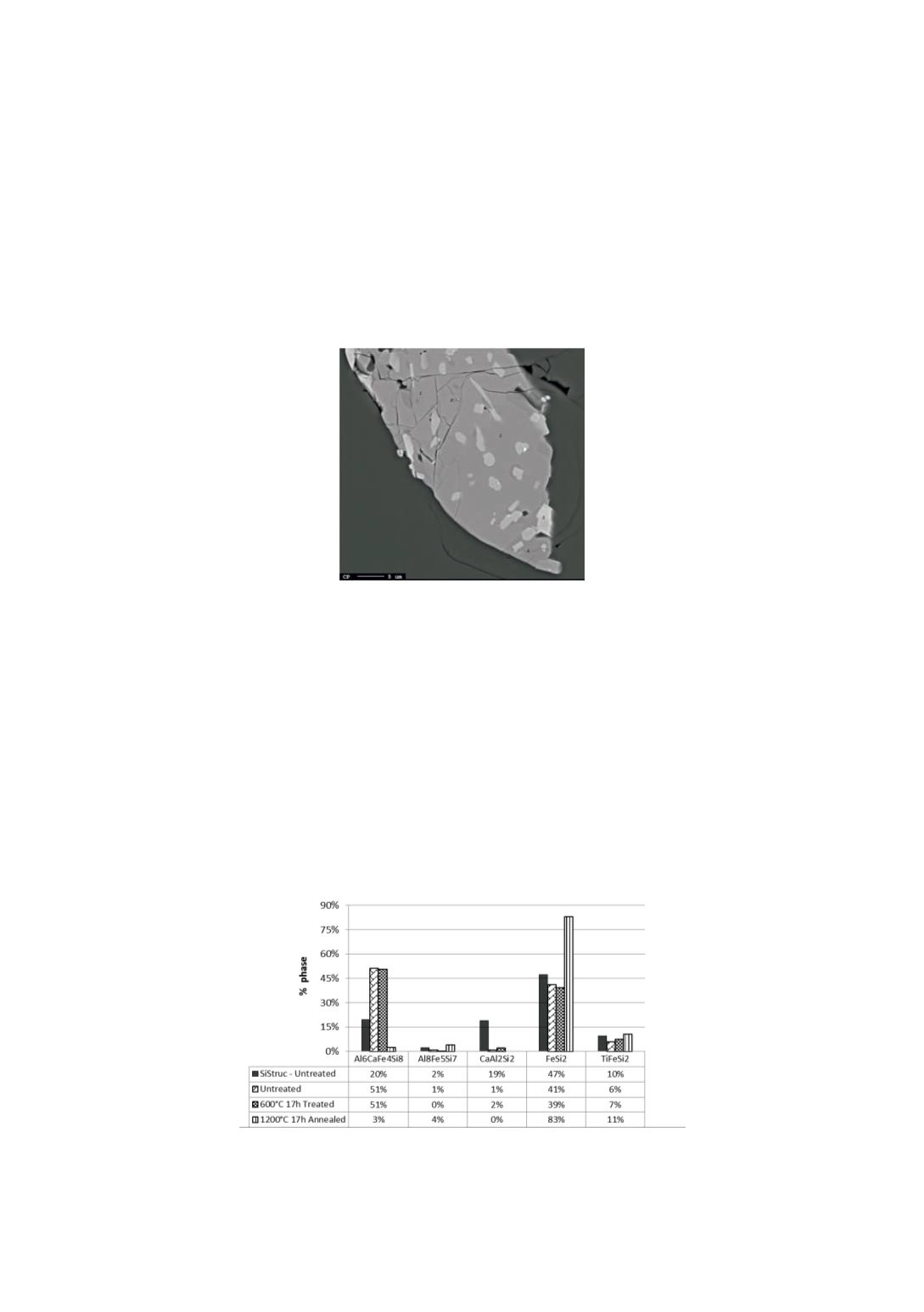

from a similar work performed by Jo [22]. The silicon matrix absorbs part of the
stress caused by this dilatation. This material is universally known for its very low
ductility. However, it seems it has enough to absorb this stress. If the ductility of
silicon had not been high enough, cracks would have widely branched all over the
surface with high speed. The transformation has partially occurred in the untreated
sample during its solidification in the industrial mould. Annealing can enhance the
formation of LT-FeSi
2
and the precipitation of silicon. Cracks will be larger and more
common in an annealed sample. Figure 8 shows cracks in intermetallics from the
annealed sample. A comparison with the untreated sample can be referred to Figure 4.
Figure 8
Cracks due to FeSi
2
phase transformation in a particle of the annealed sample
4.4 Phase characterization
Figure 9 reports the relative phase content predicted by SiStruc
®
compared to the
amount measured with ImageJ
®
in the three samples. CaAl
2
Si
2
is present in lower
amounts, since it is the last Ca-containing phase which solidifies. Ca would have
already reacted to form Al
6
CaFe
4
Si
8
. FeSi
2
has a similar relative percentage between
the untreated sample and SiStruc
®
. Fe will rather form FeSi
2
or TiFeSi
2
in the
annealed sample, since the Ca content is reduced by the oxidative refining effect. Ti is
affected only by segregation, therefore TiFeSi
2
will be relatively more present in the
annealed sample. Al
8
Fe
5
Si
7
increases relevantly, but its relative percentage is still
very low. In the end, the similarity between the sample treated at 600°C and the
untreated sample shows that at this temperature no changes in phase composition are
happening.
Figure 9
: Comparison between SiStruc
®
calculation and image analysis
92


















